Picture Belgian farm workers taking a well-deserved break during the intense summer harvest season, reaching for a refreshing, effervescent beer that quenches their thirst without overwhelming their palates. This scene captures the essence of saison, one of Belgium’s most distinctive and versatile beer styles. The saison beer style represents centuries of brewing tradition, evolving from a practical necessity for seasonal laborers into one of today’s most celebrated farmhouse ales.
Unlike heavier Belgian styles such as belgian tripel, saison offers a unique combination of complexity and refreshment. With its pale golden appearance, very dry finish, and expressive yeast character, this moderate strength belgian ale has captured the attention of craft brewers and beer enthusiasts worldwide. The style’s remarkable flexibility allows brewers to showcase creativity while honoring the belgian tradition that originally brewed these beers for sustenance and refreshment.
In this comprehensive guide, we’ll explore every aspect of the saison style, from its humble origins in Wallonian farmhouses to its modern interpretations in craft breweries around the globe. Whether you’re a seasoned beer enthusiast or new to farmhouse ales, understanding saison will deepen your appreciation for one of brewing’s most expressive and food-friendly styles.
What is Saison Beer Style
The saison beer style represents a traditional Belgian farmhouse ale characterized by its pale golden to amber color, moderate strength, and distinctively dry character. Originally brewed in the French-speaking Wallonia region of Belgium, saisons are typically highly carbonated beers that showcase an expressive yeast character dominated by fruity spicy notes and a very dry finish.
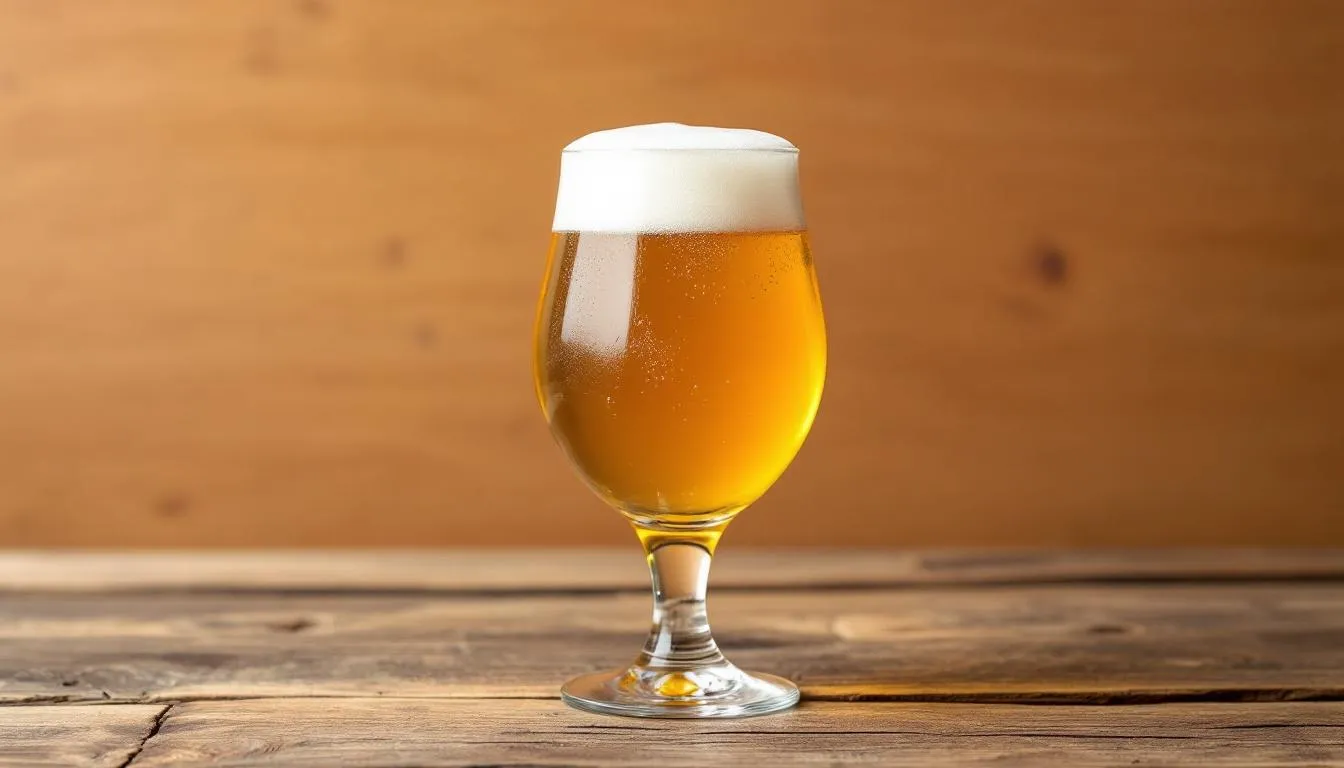
The French word “saison” translates to “season,” reflecting the beer’s historical connection to seasonal brewing and consumption patterns. Farmers originally brewed these beers during cooler months and stored them for consumption during the hot summer harvest season, when workers needed refreshing, lower alcohol beverages to sustain them through long days of manual labor.
As a farmhouse ale, saison belongs to a broader category of beers that were traditionally brewed on rural farms across Northern Europe. However, the saison style has evolved into something more specific than the general farmhouse ale category. Modern saisons maintain the rustic quality and refreshing character of their ancestors while offering brewers considerable creative freedom in ingredients and techniques.
The style’s classification places it distinctly apart from other Belgian ales. While sharing some characteristics with other farmhouse ales, saisons are generally lighter, drier, and more highly attenuated than styles like bière de garde. The hop character remains subtle but present, providing balance rather than dominance, while the stronger yeast character creates the signature fruity and spicy complexity that defines the style.
Contemporary saisons range from 5.0% to 8.0% ABV in most commercial examples, though traditional versions were often lower alcohol products designed for regular consumption by working people. This flexibility in strength, combined with the style’s inherent adaptability, has made saison a favorite canvas for creative brewers while maintaining its essential character as a refreshing, highly carbonated beer with rustic quality.
History and Origins of Saison
The saison beer style traces its origins to the rural farmhouses of Wallonia, Belgium’s French-speaking southern region, where it served a practical purpose in the agricultural calendar. The earliest documented references to “bière de saison” appear in early 19th century records from Liège, where the style developed as a preservation method for beer brewed during winter months for summer consumption.
Belgian farmers originally brewed saisons using whatever local ingredients were available, often including non barley cereal grains such as spelt and unmalted wheat alongside small quantities of barley malt. These rustic brewing practices resulted in beers with complex character derived from mixed fermentation, wild yeast, and the unique terroir of each farm’s location and ingredients.
The seasonal brewing pattern gave saison its name and defined its original purpose. Farmers would brew large batches during the cooler months when fermentation could be better controlled, then store the beer in cellars or outbuildings to mature. When summer arrived and the demanding harvest season began, these stored saisons provided essential refreshment for the saisonniers – the seasonal workers who came to help with farm labor.
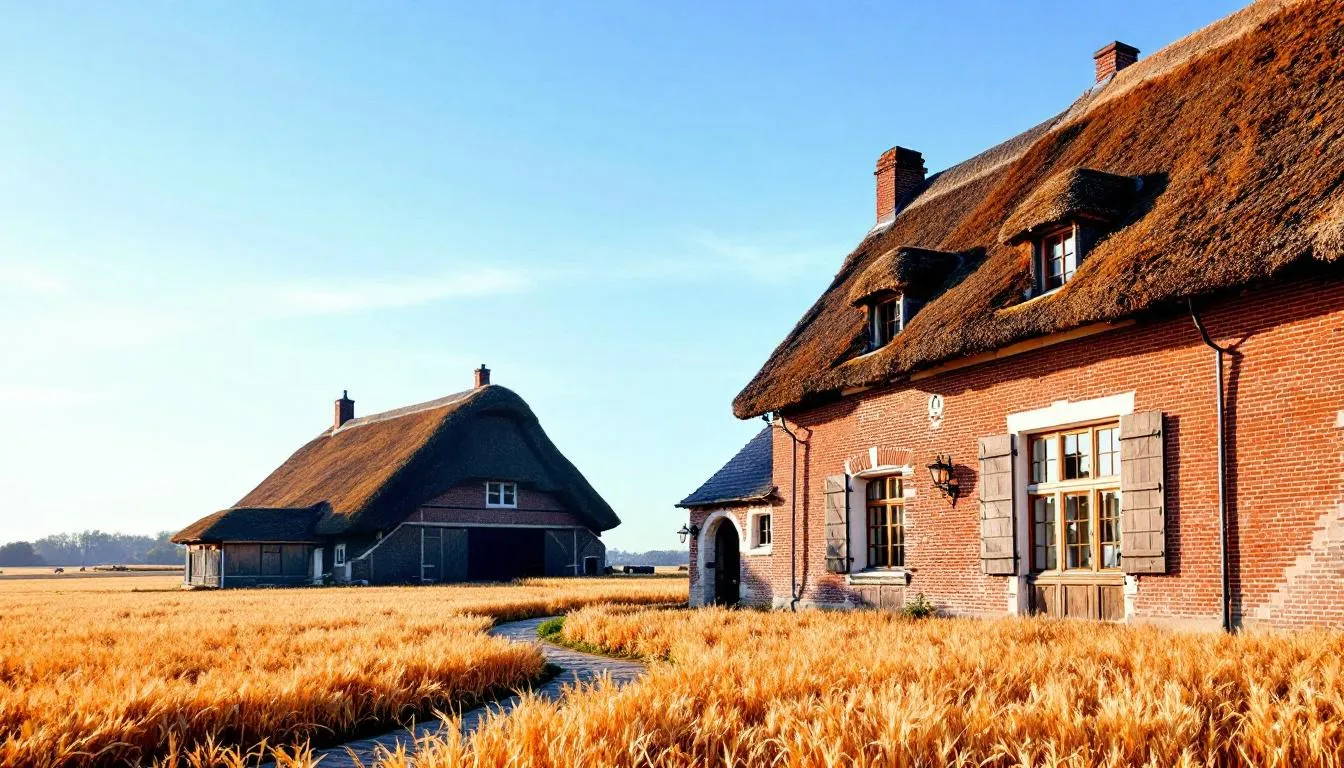
Traditional saison brewing relied heavily on ambient fermentation temperatures and whatever yeast cultures developed naturally in each brewery environment. This approach often involved mixed fermentation with various wild yeeast strains and bacteria, contributing to the earthy, complex flavors that became associated with authentic farmhouse ales. The resulting beers were necessarily lower alcohol than many modern interpretations, typically ranging from 3% to 5% ABV to remain suitable for regular consumption by working people.
The style faced near extinction following World War I, when many small farmhouse breweries disappeared. However, professional breweries in the Hainaut province continued producing saisons, gradually strengthening them and refining the recipes. These commercial versions began to emphasize the artisanal, rustic quality that had originally been born of necessity rather than design.
The modern renaissance of the saison style began in the 1980s when breweries like Brasserie Dupont began exporting their interpretations to the United States. American craft brewers embraced the style’s flexibility and rustic character, leading to countless interpretations that honor the belgian tradition while exploring new ingredients, techniques, and flavor combinations. Today, saisons are brewed year round by breweries worldwide, though the best examples still capture the refreshing, complex character that made them essential to Belgian farm life.
Saison Characteristics and Flavor Profile
The saison beer style presents a distinctive sensory profile that balances complexity with refreshment, creating one of the most recognizable and food-friendly beer experiences available. Understanding these characteristics helps both brewers and drinkers appreciate what makes a well-executed saison special.
Appearance and Visual Character
Saisons typically display a pale golden to light amber color, ranging from 5 to 14 SRM on the color scale. The pale appearance reflects the style’s agricultural origins, when lighter malts were more readily available and practical for refreshing summer consumption. Many saisons exhibit a slight haze, either from traditional brewing methods, the presence of wheat or other adjunct grains, or bottle conditioning that leaves some yeast in suspension.
The head formation on a proper saison is typically impressive and persistent, thanks to the high carbonation levels that define the style. A thick, white foam crown should form quickly when poured and maintain good retention, often leaving attractive lacing on the glass as the beer is consumed. This visual carbonation provides the first hint of the effervescent mouthfeel that follows.
Aroma Profile
The aromatic character of saisons is dominated by the expressive yeast character that defines the style. Fruity esters provide prominent citrus notes – particularly orange and lemon – along with stone fruit aromatics like apricot and pear. These fruity elements combine with spicier yeast character that introduces white pepper, clove, and sometimes subtle herbal or earthy undertones.
Traditional saisons often display a subtle funkiness derived from mixed fermentation or wild yeast contributions, though this character should enhance rather than overwhelm the primary yeast aromatics. Optional spices, when used judiciously, can complement the natural yeast spice character without masking the fundamental saison profile.
The malt character in saison aroma remains subtle and supportive, providing a gentle grainy backdrop that allows the yeast aromatics to shine. Hop character is typically minimal in the aroma, though some examples may show light floral or herbal notes that complement the overall rustic quality.
Flavor Complexity
The flavor profile of saisons begins with the same fruity and spicy yeast character prominent in the aroma, but develops additional complexity through the drinking experience. The dry finish is perhaps the most defining characteristic, achieved through high attenuation that ferments most available sugars, leaving little residual sweetness to interfere with the beer’s refreshing quality.
Citrus flavors, particularly orange and lemon, often dominate the fruit character, while peppery phenolics provide a distinctive spicy bite that gives saisons their characteristic edge. The spice character can range from subtle white pepper notes to more assertive clove-like flavors, depending on the specific yeast strain and fermentation conditions used.
The malt flavor remains restrained and supportive, providing enough body to carry the yeast flavors without competing for attention. More malt flavor appears in stronger saison variations, but even imperial-strength versions maintain the dry character that defines the style. Hop bitterness is moderately bitter – present enough to provide balance and structure but never aggressive enough to overshadow the yeast-driven complexity.
Mouthfeel and Texture
Saisons are typically highly carbonated, creating a lively, effervescent mouthfeel that enhances the beer’s refreshing qualities. This high carbonation works in harmony with the very dry finish to create a crisp, clean drinking experience that invites another sip rather than overwhelming the palate.
The body ranges from light to medium, with most examples falling toward the lighter end of the spectrum. This relatively light body, combined with the high attenuation, creates a beer that feels substantial enough to be satisfying while remaining light enough for extended drinking sessions or food pairing applications.
The finish is characteristically very dry, with minimal residual sweetness remaining after fermentation. This dryness, enhanced by the effervescent carbonation, leaves the palate cleansed and ready for food or simply prepared for another taste of the beer’s complex character profile.
Brewing Process and Ingredients
The brewing process for saisons reflects both traditional farmhouse practices and modern brewing science, requiring specific attention to ingredients, fermentation management, and achieving the characteristic high attenuation that defines the style. Understanding these technical aspects helps explain why saisons possess their distinctive character and why they present unique challenges for brewers.
Base Malt Selection
Traditional saison brewing relies primarily on Continental Pilsner malt as the base, providing the clean, grainy foundation that supports the style’s yeast-driven character. Munich malt often supplements the base malt, contributing subtle color and a slight increase in malt flavor without overwhelming the delicate balance that makes saisons refreshing.
Many brewers incorporate wheat into their saison recipes, either as malted wheat or as one of several non barley cereal grains that reflect historical brewing practices. Wheat additions typically range from 10% to 20% of the total grain bill, contributing to head retention, body, and the slight haze that many saisons display.
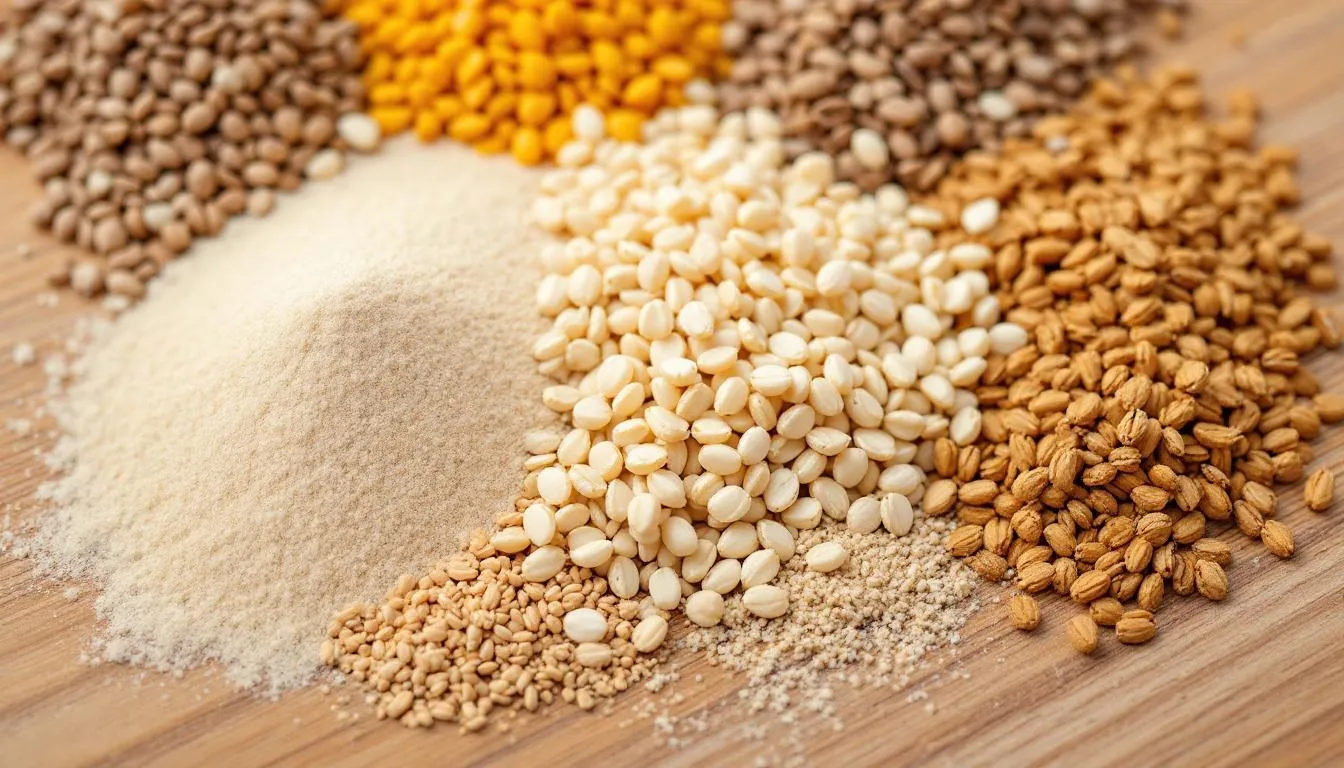
Some brewers explore historical accuracy by incorporating spelt, oats, or other ancient grains that would have been available to Belgian farmers. These additions require careful balance to maintain the clean, dry character while adding complexity and rustic authenticity to the finished beer.
Hop Selection and Usage
Hop character in saisons should complement rather than dominate the yeast-driven flavor profile. Noble hop varieties like Saaz, East Kent Goldings, and Styrian Goldings are traditional choices that provide subtle floral and herbal notes without aggressive bitterness or overwhelming aromatics.
The hop bitterness level typically ranges from 20 to 35 IBUs, providing enough structure to balance the malt and support the dry finish without competing with the yeast character. Late hop additions and dry hopping are used sparingly, if at all, since excessive hop character can mask the subtle complexity that makes saisons distinctive.
French hop varieties like Strisselspalt and Aramis have gained popularity among brewers seeking to honor the style’s geographic origins while adding subtle continental character. These hops provide the moderate bitterness and delicate aromatics that complement saison’s traditional flavor profile.
Yeast Strains and Fermentation
The saison yeast strain represents the most critical component in brewing authentic saisons, responsible for the fruity esters, spicy phenolics, and high attenuation that define the style. Traditional saison yeast produces the characteristic peppery, citrusy character while fermenting to very low final gravities, often below 1.008 and sometimes as low as 1.002.
Fermentation temperatures significantly influence the final character of saisons. Many brewers start fermentation at moderate temperatures (68-72°F) before allowing or encouraging the temperature to rise into the 80s or even 90s Fahrenheit. This temperature manipulation enhances ester and phenol production while promoting the extreme attenuation that creates the signature very dry finish.
Some modern saisons incorporate mixed fermentation techniques, introducing Brettanomyces or lactic acid bacteria to create additional complexity and subtle funkiness. These additions require careful management to avoid overwhelming the base saison character, but when successful, they add layers of earthy, tart, or funky notes that enhance the rustic quality.
Optional Ingredients and Adjuncts
Traditional saisons occasionally featured optional spices, herbs, or other botanicals that reflected local availability and brewer preference. Common additions include coriander seed, grains of paradise, black pepper, and citrus peel, though these should enhance rather than mask the natural yeast character.
The use of optional spices requires restraint and careful balance. Successful spiced saisons integrate the additions seamlessly with the yeast-driven character, creating complexity rather than obvious spice flavors. Many award-winning saisons use no spices at all, relying entirely on yeast character to provide the spicy, herbal notes associated with the style.
Some brewers experiment with fruit additions, particularly citrus fruits that complement the natural ester character of saison yeast. These additions work best when they enhance existing flavor notes rather than introducing completely new flavor profiles that compete with the fundamental saison character.
Achieving High Attenuation
The highly attenuated character that produces saison’s very dry finish requires specific brewing techniques and yeast management. Mash temperatures are typically kept on the lower end of the saccharification range (148-152°F) to produce a highly fermentable wort with fewer complex sugars that might remain unfermented.
Extended fermentation periods, sometimes lasting several weeks, ensure that the yeast has sufficient time to metabolize all available sugars. Some brewers employ step-feeding techniques, adding simple sugars during fermentation to encourage continued yeast activity and extreme attenuation.
The high carbonation typical of saisons is often achieved through bottle conditioning, which also allows for continued flavor development and maturation. This traditional carbonation method contributes to the complex, evolving character that makes aged saisons particularly rewarding for patient drinkers.
Saison Style Variations
The flexibility inherent in the saison beer style has led to numerous variations that explore different strength levels, ingredients, and brewing approaches while maintaining the essential character that defines farmhouse ales. These variations demonstrate the style’s adaptability and provide options for different drinking occasions and flavor preferences.
Table Saison (Session Strength)
Table saisons represent the closest modern interpretation to historical farmhouse brewing, featuring lower alcohol content ranging from 3.5% to 5.0% ABV. These lower alcohol versions emphasize drinkability and refreshment, making them ideal for extended consumption during warm weather or with food.
The reduced alcohol content in table saisons requires careful balance to maintain the characteristic yeast character and complexity while avoiding thin or watery impressions. Brewers often compensate with increased hop character or more assertive yeast strains to ensure the beer remains interesting despite its moderate strength.
These session-strength interpretations often display enhanced carbonation and an even drier finish than their stronger counterparts, emphasizing the refreshing qualities that made saisons essential for agricultural workers. The lighter body and reduced alcohol warmth make table saisons excellent introductions to the style for drinkers new to farmhouse ales.
Standard Saison
The standard saison range of 5.0% to 7.0% ABV encompasses most commercial examples and represents the sweet spot between historical authenticity and modern drinking preferences. This strength level provides sufficient alcohol to support complex flavors while maintaining the refreshing character that defines the style.
Regular saison expressions allow brewers to showcase the full range of yeast character while incorporating additional ingredients like optional spices or specialty malts. The moderate alcohol content provides enough structure to support aging, allowing flavors to develop and integrate over time while maintaining the essential dry finish.
Standard strength saisons offer the greatest versatility for food pairing, providing enough body and complexity to complement a wide range of dishes without overwhelming delicate flavors. This versatility has made regular saison strength the most popular interpretation among both commercial brewers and homebrewing enthusiasts.
Super Saison (Imperial Strength)
Higher alcohol products in the saison category, ranging from 7.0% to 9.5% ABV, are sometimes called “super saisons” or imperial saisons. These stronger versions require increased malt character to balance the additional alcohol while maintaining the characteristic dry finish that defines the style.
The higher gravity necessary for imperial strength saisons often introduces more malt flavor and body, though skilled brewers maintain the essential highly attenuated character through extended fermentation and appropriate yeast management. The additional alcohol provides preservation benefits and allows for extended aging that can develop complex flavors over time.
Imperial saisons often showcase more assertive ingredient additions, such as stronger spice character or more prominent hop flavors, that would overwhelm lower-strength versions. The increased alcohol also provides better integration for adjunct ingredients like fruit or unusual spices that benefit from the additional time and complexity that higher alcohol beers provide.
Grisette Variation
Grisette represents a related farmhouse style that shares many characteristics with saison while maintaining distinct differences in strength and character. Traditionally brewed for coal miners in the Hainaut and Borinage regions of Belgium, grisettes typically range from 2.8% to 4.5% ABV and often feature wheat as a prominent ingredient.
The lower alcohol content and wheat additions create a different mouthfeel and flavor profile compared to standard saisons, though the dry finish and high carbonation remain consistent themes. Grisettes often display more subtle yeast character due to their lower alcohol content, requiring careful brewing to maintain interest and complexity.
Modern interpretations of grisette often blur the lines with table saisons, as both styles occupy similar alcohol ranges and share the farmhouse ale tradition. The distinction often comes down to grain bill composition and regional brewing traditions rather than strict style guidelines.
Color Variations
While most saisons fall within the pale golden to amber range (5-14 SRM), some brewers produce darker versions that incorporate roasted malts or other specialty grains. These dark saisons maintain the essential character of high attenuation and yeast-driven flavor while adding color and subtle roasted flavors.
Dark saison variations require careful balance to prevent the roasted malt character from overwhelming the delicate yeast complexity that defines the style. Successful examples integrate chocolate or coffee notes seamlessly with the fruity spicy yeast character, creating unique flavor combinations that honor the style’s flexibility.
The rustic quality of saisons accommodates these color variations well, as historical farmhouse brewing would have used whatever malts were available locally. Modern dark saisons often appeal to drinkers who enjoy the saison character but prefer more substantial, winter-appropriate beers with additional complexity from specialty malts.
Wild and Sour Variations
Mixed fermentation saisons incorporate wild yeast strains like Brettanomyces or lactic acid bacteria to create additional layers of complexity and flavor development. These variations often require extended aging periods but can produce extraordinary complexity that showcases the style’s historical connection to spontaneous fermentation.
Brett saisons typically develop earthy, funky, or barnyard-like flavors that complement the traditional yeast character while adding new dimensions of flavor and aroma. The Brettanomyces character often becomes more prominent with age, creating beers that continue evolving in the bottle for months or years.
Sour saisons incorporate controlled souring through lactic acid bacteria, creating tart flavors that enhance the refreshing character of the base style. These versions require careful balance to prevent excessive acidity that might overwhelm the essential saison character, but successful examples create uniquely refreshing and complex drinking experiences.
Notable Saison Examples and Breweries
Understanding the saison beer style requires familiarity with exemplary commercial examples that showcase both traditional Belgian expressions and innovative modern interpretations. These benchmarks demonstrate the range of possibilities within the style while maintaining the essential characteristics that define authentic farmhouse ales.
Classic Belgian Examples
Saison Dupont stands as the most widely recognized benchmark for the saison style, earning its reputation through consistent quality and faithful representation of traditional Belgian brewing methods. Produced by Brasserie Dupont in Tourpes, Belgium, this beer showcases the ideal balance of fruity esters, peppery spice, and bone-dry finish that defines classic saison character.
The brewery’s commitment to traditional techniques, including bottle conditioning and natural carbonation, produces a beer with remarkable complexity that continues developing with age. Saison Dupont’s pale golden color, persistent white head, and distinctive orange-citrus aromatics have influenced countless interpretations worldwide, making it essential drinking for anyone seeking to understand the style.
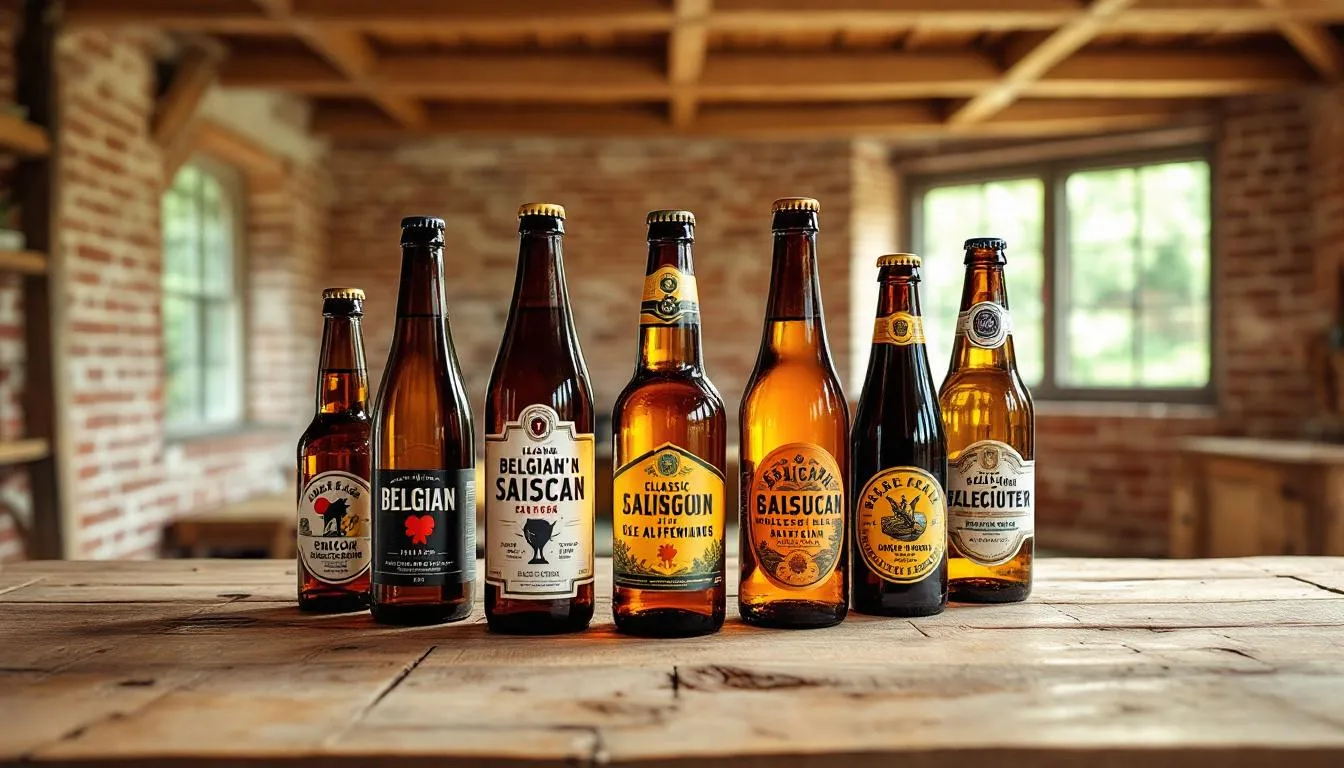
Fantôme Saison represents a more experimental approach to traditional Belgian brewing, with Dany Prignon’s creative interpretations showcasing the style’s flexibility while honoring its farmhouse origins. Each batch of Fantôme Saison varies slightly, reflecting the brewer’s willingness to experiment with different ingredients, seasonal variations, and brewing techniques that capture the artisanal spirit of farmhouse brewing.
Saison de Pipaix, produced by Brasserie à Vapeur, offers another perspective on traditional saison brewing with its inclusion of multiple spices that complement rather than overwhelm the base beer character. This beer demonstrates how optional spices can enhance the natural yeast character when used with restraint and skill, creating additional complexity without masking the essential farmhouse ale qualities.
American Craft Interpretations
American craft brewers have embraced the saison style with enthusiasm, producing interpretations that honor the belgian tradition while incorporating local ingredients and brewing innovations. Boulevard Tank 7, produced in Kansas City, Missouri, exemplifies the American approach to saison brewing with its clean, accessible character that maintains traditional flavor profiles while appealing to contemporary palates.
Tank 7’s success demonstrates how American brewers can create modern saisons that remain faithful to the style’s essential characteristics while incorporating technical precision and consistency that appeals to craft beer consumers. The beer’s balanced approach to fruity and spicy yeast character, combined with its reliable availability, has made it an excellent introduction to the style for many American drinkers.
Allagash Saison from Portland, Maine, showcases the potential for American interpretation of Belgian traditions through careful attention to traditional brewing methods combined with modern quality control. The brewery’s commitment to bottle conditioning and natural carbonation produces complexity that rivals Belgian examples while maintaining the refreshing character that makes saisons versatile and food-friendly.
Ommegang Hennepin, produced in Cooperstown, New York, represents one of the earlier successful American saisons that helped establish the style’s popularity in the United States. The beer’s approachable character and wide distribution introduced many American drinkers to the saison style, demonstrating the market potential for well-executed farmhouse ales.
Modern Farmhouse Breweries
Contemporary farmhouse-focused breweries have pushed the boundaries of saison brewing while maintaining connection to agricultural traditions and rustic brewing methods. Hill Farmstead Brewery in Vermont has gained recognition for saisons that incorporate local ingredients and mixed fermentation techniques, creating unique expressions that capture terroir and seasonal variation.
Hill Farmstead’s approach to saison brewing often involves extended aging, wild fermentation, and careful attention to ingredient sourcing that reflects the agricultural environment surrounding the brewery. These methods produce saisons with exceptional complexity and character that evolve significantly with age, appealing to serious beer collectors and enthusiasts.
Jester King Brewery in Texas has become renowned for wild ale production that often incorporates saison as a base style for mixed fermentation experiments. Their farmhouse approach to brewing, including coolship fermentation and barrel aging, produces saisons with unique character that reflects both traditional Belgian methods and the distinctive Texas terroir.
Casey Brewing & Blending in Colorado focuses specifically on barrel-aged, mixed fermentation beers that often begin as saison base recipes before undergoing extended aging with wild yeast and bacteria. This approach produces complex, evolving beers that showcase how traditional saison brewing can serve as a foundation for innovative flavor development.
Regional Variations and Innovation
Modern saison brewing has expanded globally, with breweries in various countries contributing unique perspectives on the traditional style. Australian, Canadian, and Scandinavian brewers have produced notable saisons that incorporate local ingredients and reflect regional brewing traditions while maintaining the essential character that defines the style.
These international interpretations often showcase local agricultural products, from native fruits and spices to regional grain varieties that add unique character while honoring the farmhouse tradition of using available local ingredients. The global expansion of saison brewing demonstrates the style’s universal appeal and adaptability to different climates and brewing traditions.
The innovation within modern saison brewing continues expanding the style’s possibilities while maintaining connection to its agricultural origins. Successful modern examples balance creativity with respect for traditional character, ensuring that experimentation enhances rather than obscures the fundamental qualities that make saisons distinctive and appealing.
Serving and Food Pairings
The saison beer style’s exceptional versatility in food pairing situations stems from its unique combination of high carbonation, very dry finish, and complex yeast character that complements rather than competes with a wide range of flavors. Understanding optimal serving conditions and pairing principles maximizes the enjoyment of these sophisticated farmhouse ales.
Optimal Serving Conditions
Saisons reach their full potential when served at cellar temperature, typically between 45-50°F, which allows the complex aromatics to emerge while maintaining the refreshing character that defines the style. Serving temperatures that are too cold will suppress the delicate yeast-driven aromatics, while excessive warmth can make the alcohol more prominent and reduce the beer’s refreshing qualities.
The choice of glassware significantly impacts the saison drinking experience. Tulip glasses or wine glasses work exceptionally well, concentrating the aromatics while providing adequate space for the impressive head formation that results from the style’s high carbonation. The wide bowl allows for proper swirling to release aromatics, while the narrower rim concentrates the complex bouquet.
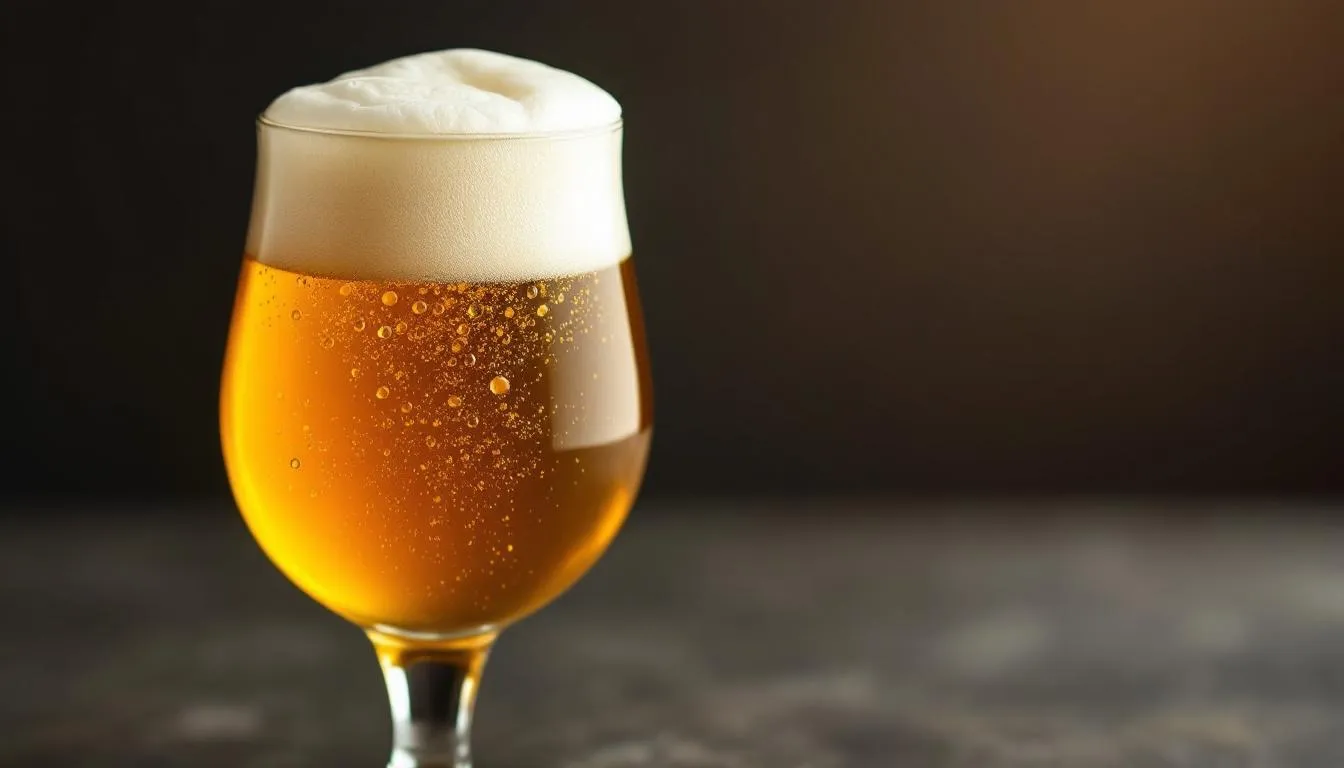
Proper pouring technique enhances the visual presentation and aromatic impact of saisons. A moderately aggressive pour encourages full head development and releases CO2 that carries the beer’s complex aromatics. The typically highly carbonated nature of saisons requires patience during pouring to avoid excessive foam, but the effort rewards drinkers with the full sensory experience these beers offer.
Food Pairing Versatility
The dry finish and high carbonation of saisons make them exceptional palate cleansers that work beautifully with rich or fatty foods. The effervescent character cuts through heavy sauces and oils while the spicy yeast character provides flavor interest that complements rather than overwhelms delicate dishes.
Seafood pairings showcase saisons at their best, with the beer’s citrusy character and crisp finish enhancing the natural flavors of fish and shellfish. Raw oysters pair particularly well with saisons, as the beer’s minerality and acidity complement the briny sweetness while the carbonation provides textural contrast. Grilled fish, crab cakes, and lobster all benefit from saison’s ability to cleanse the palate between bites.
Poultry dishes, especially those prepared with herbs or citrus, create natural harmony with the fruity spicy character of saisons. Roasted chicken with fresh herbs, duck confit, or turkey preparations benefit from the beer’s ability to cut through rich flavors while adding complementary spice and fruit notes. The moderate alcohol content provides enough body to stand up to substantial preparations without overwhelming delicate seasonings.
Cheese and Charcuterie Pairings
Saisons excel with cheese pairings, particularly soft goat cheeses that complement the beer’s tartness and earthy character. The high carbonation and acidity of saisons provide excellent contrast to creamy textures while the yeast character enhances the complex flavors found in aged farmhouse cheeses.
Fresh mozzarella, particularly when served with tomatoes and basil, creates classic combinations that highlight saison’s food-friendly nature. The beer’s clean finish allows the subtle milk flavors to shine while providing effervescent refreshment between bites. Aged cheeses like Comté or aged Cheddar pair well with stronger saisons that can match the intensity of more complex cheese flavors.
Charcuterie boards benefit from saison’s palate-cleansing properties, with the beer’s carbonation and dryness providing relief from rich, salty cured meats. The spicy yeast character often echoes spices used in traditional charcuterie preparations, creating harmonious flavor combinations that enhance both the beer and food.
Seasonal and Occasion-Based Serving
The historical connection between saisons and seasonal consumption makes them particularly appropriate for warm weather drinking and outdoor dining situations. The refreshing character and moderate alcohol content make saisons ideal for extended consumption during summer gatherings, barbecues, or picnic situations where refreshment takes priority over intensity.
Spring and summer vegetables, particularly those prepared simply with olive oil and herbs, showcase saison’s ability to enhance rather than mask delicate flavors. Asparagus, artichokes, and fresh peas all pair beautifully with the earthy, herbal notes that many saisons display, while the beer’s acidity brightens the overall flavor experience.
The style’s Belgian origins make saisons appropriate for more formal dining situations where their complexity and food-friendly character can be appreciated alongside carefully prepared dishes. The moderate alcohol content allows for multiple course pairings without overwhelming the palate, while the evolving character of bottle-conditioned examples provides interest throughout extended meals.
Temperature and Aging Considerations
Many saisons benefit from slight warming as they’re consumed, allowing different aromatic compounds to emerge and providing an evolving tasting experience. Starting at proper serving temperature and allowing gradual warming reveals layers of complexity that might be missed in a single quick consumption.
Aged saisons often develop additional complexity that can influence pairing choices, with extended aging sometimes producing wine-like characteristics that pair well with more sophisticated dishes. The dry finish and high carbonation typically remain consistent regardless of age, maintaining the food-friendly characteristics that make fresh saisons so versatile.
The bottle conditioning common in many saisons means that proper storage and handling become important considerations for optimal serving. Upright storage and gentle handling preserve carbonation levels while allowing for proper yeast settling that produces clear beer when poured carefully, maximizing both visual appeal and flavor clarity.
Conclusion
The saison beer style represents one of brewing’s most successful marriages of tradition and innovation, combining centuries-old Belgian farmhouse brewing wisdom with modern craft brewing creativity. From its humble origins providing refreshment to seasonal farm workers in Wallonia to its current status as a beloved craft beer style worldwide, saison demonstrates remarkable adaptability while maintaining its essential character.
The key characteristics that define exceptional saisons – the very dry finish, expressive yeast character, high carbonation, and rustic quality – create a beer style that satisfies both casual drinkers seeking refreshment and enthusiasts pursuing complexity. Whether exploring classic examples like Saison Dupont or discovering innovative interpretations from modern farmhouse breweries, drinkers encounter a style that rewards both immediate enjoyment and careful contemplation.
The versatility of saisons extends far beyond their varied interpretations to their exceptional performance in food pairing situations. The style’s unique combination of moderate strength, high attenuation, and complex yeast character creates opportunities for culinary exploration that few other beer styles can match. This food-friendly nature, combined with year-round appeal, ensures saison’s continued relevance in contemporary drinking culture.
For those beginning their exploration of the saison style, starting with established Belgian examples provides the foundation for understanding what makes these farmhouse ales special. From there, the journey into American craft interpretations, wild fermentation variants, and seasonal expressions offers endless opportunities for discovery within this remarkably flexible yet distinctively characterized style.
The enduring appeal of saison lies not just in its refreshing qualities or complex flavors, but in its embodiment of brewing as both craft and art. Each bottle tells the story of agricultural tradition, brewing innovation, and the timeless human desire for beverages that nourish both body and spirit while bringing people together around tables laden with good food and meaningful conversation.

Leave a Reply